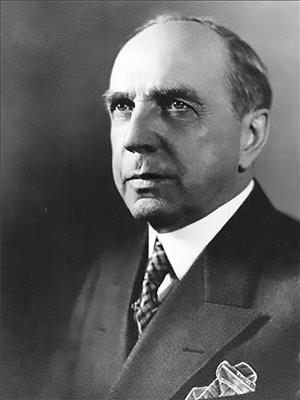On May 1, 1927, Governor Roland H. Hartley (1864-1952) appoints Samuel J. Humes (1883-1941) as State Highway Engineer to replace J. Webster Hoover. The governor had fired Hoover effective the day before, April 30. Humes serves for six years, leading the Highway Department through the first years of the Depression. His administration is marked by bitter political infighting as well as substantial progress in highway construction.
Hartley's Feud
Hartley had appointed Hoover two years earlier, soon after he took office. A popular and able administrator, Hoover evidently failed to sufficiently support the governor's political agenda, which included cutbacks in highway building.
When Hartley fired Hoover, two top Highway Department officials resigned, and Humes removed four others the day he took office. Hoover's firing and Humes' subsequent house cleaning at the Department touched off a bitter though occasionally comic feud on the Highway Committee, where no love was lost between Hartley and the other two members, State Auditor Charles W. Clausen and State Treasurer William G. Potts.
Lawsuits, Scuffles, and a Little Jail Time
Along with multiple lawsuits, the feud included a scuffle between Humes and George McCoy, a department official who Clausen and Potts appointed Secretary to the Committee after Humes had dismissed him, and a brief trip to jail for Humes when he ignored a court order to turn department records over to the Committee majority. In 1929 the Legislature abolished the Committee. Governor Hartley then named Humes to the newly created position of Director of Highways, giving him uncontested control of the department.
Despite political distractions and the onset of the Great Depression, the Department achieved a number of milestones under Humes. The first Vantage Bridge across the Columbia River opened as did the George Washington Memorial (Aurora Avenue) Bridge carrying Highway 99 over Seattle's Lake Union. The Olympic Loop Highway (US 101) opened and paving was completed on Sunset Highway between Seattle and Snoqualmie Pass.
As the Depression deepened, highway appropriations were used for relief work for the unemployed, and the Director's Biennial Report, usually a handsomely bound and lavishly illustrated volume, temporarily became a short typewritten statistical summary.
In March 1933, Lacey V. Murrow succeeded Humes as Director of Highways.

